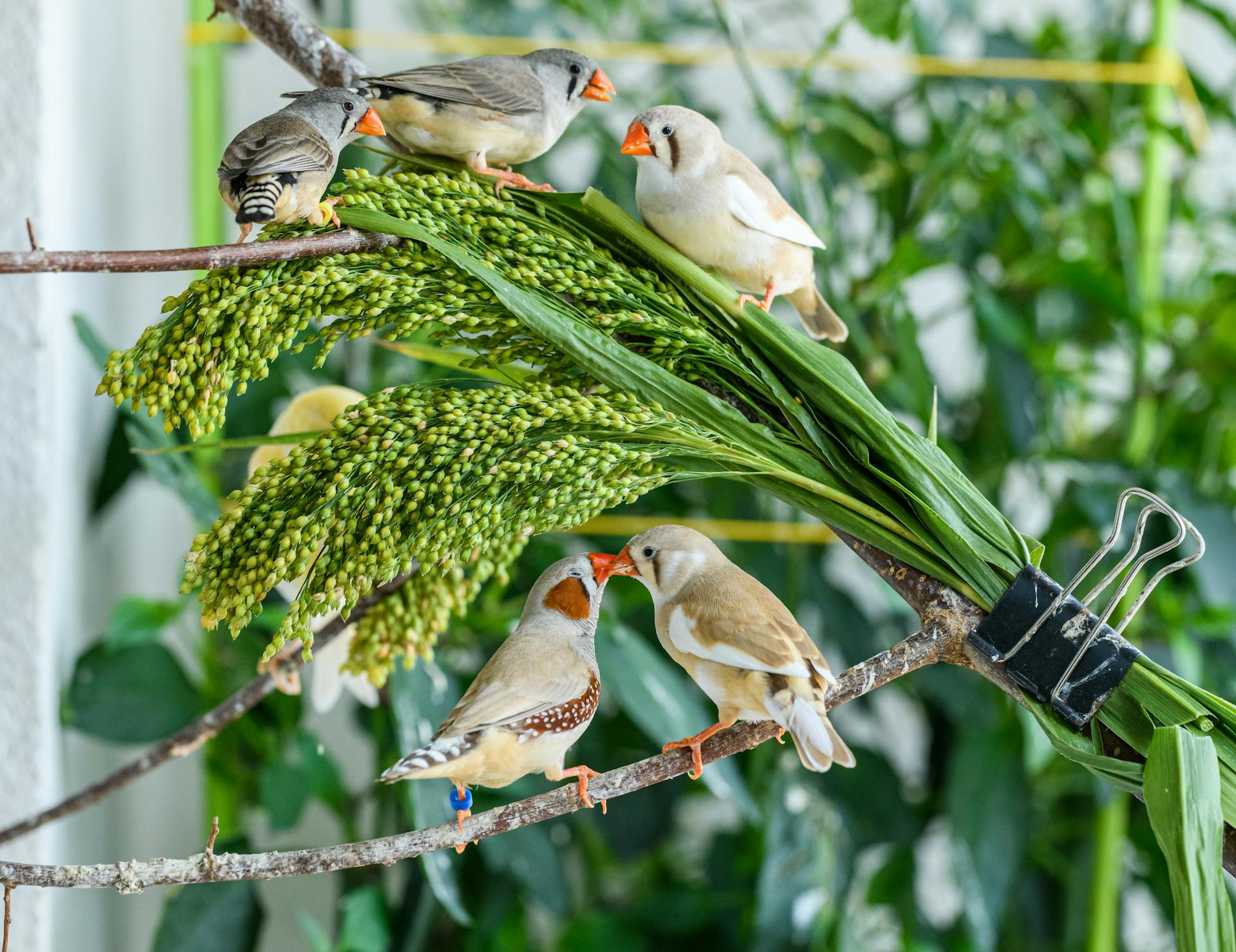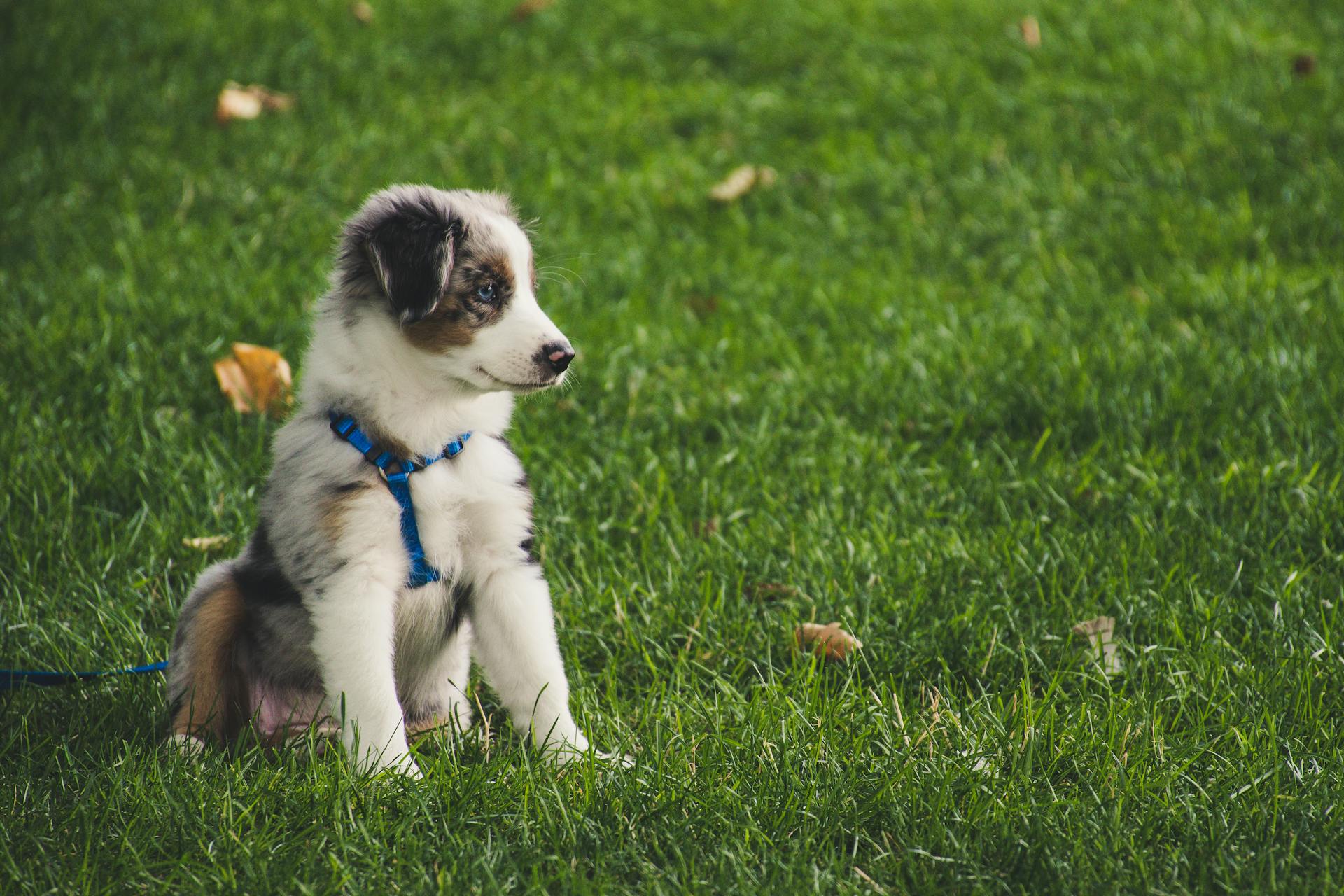
The Australian Silky Terrier is a small but feisty breed that originated in Australia in the 19th century. They have a distinctive silky coat that requires regular grooming.
Australian Silky Terriers are known for their friendly and outgoing personalities, making them great companions for families and individuals alike. They are highly social dogs that thrive on human interaction.
These dogs are relatively small in size, weighing between 8-11 pounds and standing about 9-10 inches tall at the shoulder. Regular exercise is essential to keep them happy and healthy.
With proper care and attention, Australian Silky Terriers can live up to 12-15 years, making them a long-term companion for many families.
Care and Nutrition
To keep your Australian Silky Terrier happy and healthy, it's essential to provide a balanced diet and regular exercise. Feed them a high-quality, age-appropriate dog food that meets the nutritional standards set by the Association of American Feed Control Officials (AAFCO).
Your Silky Terrier needs a consistent diet, so avoid giving them people food and stick to their regular meals. A daily diet of 90% dog food and no more than 10% treats is a good rule of thumb. Consider feeding them three times a day to prevent hypoglycemia, especially if they're under a year old.
Here's a quick guide to help you determine how much to feed your Silky Terrier:
Remember to also provide regular exercise, such as a daily walk or agility course, to keep your Silky Terrier happy and healthy.
Nutrition and Feeding
Your Silky Terrier's diet needs to have the right balance of all the main nutrient groups, including a constant supply of fresh water.
Feeding your dog at least twice daily and in accordance with the feeding guidelines of their particular food is crucial for maintaining their ideal weight and overall health.
It's essential to monitor your dog's body condition scores regularly to ensure they stay in shape.
A high-quality, age-appropriate diet is necessary for your Silky Terrier's health, and you should watch how much they eat to prevent overeating.
To keep your Silky Terrier healthy, reduce portions if your pup gains excess weight and avoid giving too many treats, which can contribute to obesity.
You should feed your Silky Terrier 90% dog food formulated for their age and no more than 10% treats.
Here's a rough guide to feeding your Silky Terrier:
Consult your veterinarian for specific feeding guidelines tailored to your dog's weight, health, life stage, and lifestyle.
Measure the food for each meal to ensure you are feeding your Silky Terrier the proper amount.
At Home Care
To keep your Silky Terrier happy and healthy, regular care is a must. Brush her teeth at least three times a week to prevent serious problems with her teeth.
Daily brushing and regular trimming is recommended to prevent mats and keep her long coat beautiful. A soft-bristle brush is perfect for this task.
Intriguing read: Dogo Argentino Teeth

Clean her ears weekly, even as a puppy, to minimize the risk of infections. Use a veterinary-approved ear cleaner for this purpose.
Highly active indoors, Silky Terriers are well suited to apartment living and traveling. However, they need at least one hour of exercise daily to be happy.
A harness is recommended when leash walking your Silky, as they have a tendency to chase small animals. Keep your dog's diet consistent and don't give her people food.
Here are some essential care tasks to remember:
- Brush her teeth at least three times a week
- Clean her ears weekly
- Brush her coat at least twice a week
- Trim her coat every four to six weeks
- Provide at least one hour of exercise daily
- Keep her diet consistent and avoid people food
Grooming and Health
Grooming your Australian Silky Terrier is a crucial part of their overall health and well-being. Regular brushing and combing can prevent tangles and keep their coat looking glossy and healthy.
You'll want to brush their coat at least twice a week with a pin brush or soft bristle brush, and use a long-toothed metal dog comb to contend with tangles. A professional groomer may also be necessary to keep their coat trimmed and prevent matting.
Daily nail trimming and monthly baths are also essential for your Silky Terrier's health. And don't forget to clean their ears weekly to prevent infections.
Here are some key grooming tasks to remember:
- Brush their coat at least twice a week
- Use a long-toothed metal dog comb to contend with tangles
- Trim their nails daily
- Bathe them every month or so
- Clean their ears weekly
By following these simple grooming tasks, you can help keep your Australian Silky Terrier happy, healthy, and looking their best.
Grooming and Health -> Grooming
Grooming is an essential part of taking care of your Silky Terrier. Regular brushing is crucial to prevent matting and keep their long coat looking healthy and shiny.
Brush your Silky Terrier at least twice a week using a soft-bristle brush or a pin brush, as recommended in Examples 2 and 7. This will help remove tangles and prevent matting.
Daily brushing and regular trimming are recommended to prevent mats and keep their long coat beautiful, as stated in Example 5. This will also help keep their coat looking healthy and shiny.
Silky Terriers need to be brushed at least twice a week to prevent matting, as mentioned in Examples 6 and 7. This is especially important because their hair grows continuously.
Take a look at this: Healthy Bull Terrier
To keep your Silky Terrier's coat and skin healthy, professional grooming appointments are often needed to keep their hair trimmed to an appropriate length, as suggested in Examples 6 and 7.
Here are some additional grooming tips to keep in mind:
- Brush their coat after a walk to remove any debris that may have accumulated.
- Use a long-toothed metal dog comb to help contend with tangles.
- Trim their nails regularly to prevent overgrowth.
- Give them baths every month or so to keep their coat clean and healthy.
By following these grooming tips, you can help keep your Silky Terrier looking and feeling their best. Remember to always check their coat after a walk and to brush them regularly to prevent matting.
Eye Care
Silky Terriers are prone to eye disorders, so it's essential to work with a breeder who has their dogs examined and tested for ocular disorders.
You should schedule a wellness exam with your veterinarian to have your Silky Terrier's eyes checked once a year.
Tear staining is a common issue in this breed, but it can be easily removed with a pet-safe wipe.
Keep the fur around your Silky Terrier's eyes trimmed short to prevent it from obstructing their vision.
Regular check-ups with your veterinarian can help catch any eye problems early on, so don't hesitate to schedule an appointment if you notice changes to your dog's eyes or suspect vision loss.
Health Issues
Silky Terriers are relatively healthy dogs, but like all dogs, they can develop some health issues throughout their long life. Regular check-ups with your veterinarian can help catch any potential problems early on.
Eye disorders are a common health issue in Silky Terriers, and they can be inherited from their parents. Researching a reputable breeder who has their breeding dogs examined and tested for various ocular disorders is crucial.
Tear staining is another issue that can affect Silky Terriers, and it can be removed with a pet-safe wipe. Keep an eye out for changes in your dog's eyes or vision loss, and schedule a vet appointment as soon as possible.
Dental disease is also a significant concern for Silky Terriers, caused by the buildup of tartar and calculus. Regular at-home dental care and professional dental cleanings can help prevent this issue.
Bad breath, tooth root abscesses, and loss of teeth can occur if dental disease is left untreated. A vet should perform an oral exam every six to 12 months to determine whether a professional dental cleaning is needed.
If this caught your attention, see: Veteran Dog Treats
Silky Terriers can also experience patellar luxation, where the knee cap moves out of its normal groove. While this is a common issue in the breed, it's essential to monitor your dog's knee health and consult with your veterinarian if you notice any unusual signs or symptoms.
By being aware of these potential health issues and taking proactive steps to prevent or catch them early, you can help keep your Silky Terrier happy and healthy for years to come. Regular check-ups with your veterinarian and at-home care can go a long way in maintaining your dog's overall well-being.
Exercise and Training
Exercise and training are crucial for Australian Silky Terriers. They need at least an hour of exercise daily, ideally split into two 30-minute walks, to stay happy and healthy.
A Silky Terrier's exercise needs are quite high, especially for a lapdog. They require physical and mental stimulation to prevent boredom and destructive behavior.
To keep your Silky Terrier amused, you can add extra training and games to their daily routine. This will help keep them engaged and active.
Here are some fun activities you can try with your Silky Terrier:
- Mini agility training
- Mantrailing
- Trick training
- Agility courses
- Tracking
- Earthdog trials
- Flyball
- Rally
- Competitive obedience
Silky Terriers respond well to positive reinforcement training methods, such as reward-based training using favorite treats and toys. They are quick learners and eager to please their family members.
However, they can be vocal, so early socialization and teaching a 'hush' cue is essential. Regular training sessions will help strengthen your bond with your Silky Terrier and keep them well-behaved.
Health and Wellness
Silky Terriers are relatively healthy dogs, but like all dogs, they can develop some health issues throughout their long life.
Their average life expectancy is around 13.3 years, according to a 2024 UK study of 45 deaths.
Many diseases and health conditions are genetic, meaning they are related to your pet's breed, so it's essential to be aware of the potential risks.
The good news is that by knowing about health concerns specific to Silky Terriers, you can tailor a preventive health plan to watch for and hopefully prevent some predictable risks.
This breed is prone to patellar luxation, a condition where the knee cap moves out of its normal groove, so it's crucial to keep an eye on their joints.
You can also help prevent health issues by following the tips in our guide on what to do at home to keep your Silky looking and feeling her best.
Frequently Asked Questions
What is the difference between a Yorkie and an Australian Silky Terrier?
The main difference between a Yorkie and an Australian Silky Terrier is their size and build, with Silkies being larger and more substantial. While they may look similar, a closer look reveals distinct physical differences.
Do Australian silky Terriers bark a lot?
Australian Silky Terriers are prone to barking, especially when alerting or seeking attention, and proper training can help minimize this behavior. Regular training can help reduce excessive barking in Silky Terriers.
What two breeds make a Silky Terrier?
Silky Terriers are a cross between Yorkshire Terriers and Australian Terriers. This unique blend of breeds results in a distinct and larger companion dog.
What is the difference between an Australian Terrier and a Silky Terrier?
The main difference between an Australian Terrier and a Silky Terrier is their coat type: Australian Terriers have a double coat, while Silky Terriers have a single, straight, and silky coat. This difference affects their grooming needs and overall appearance.
Do Australian silky terriers shed?
Australian Silky Terriers are a hypoallergenic breed that sheds less often due to their unique hair structure. They still require regular grooming and exercise to stay healthy and happy.
Sources
- https://www.purina.co.uk/find-a-pet/dog-breeds/australian-silky-terrier
- https://parkwoodanimalhospital.com/client-resources/breed-info/silky-terrier/
- https://www.wisdompanel.com/en-us/dog-breeds/silky-terrier
- https://en.wikipedia.org/wiki/Australian_Silky_Terrier
- https://www.petmd.com/dog/breeds/silky-terrier
Featured Images: pexels.com


